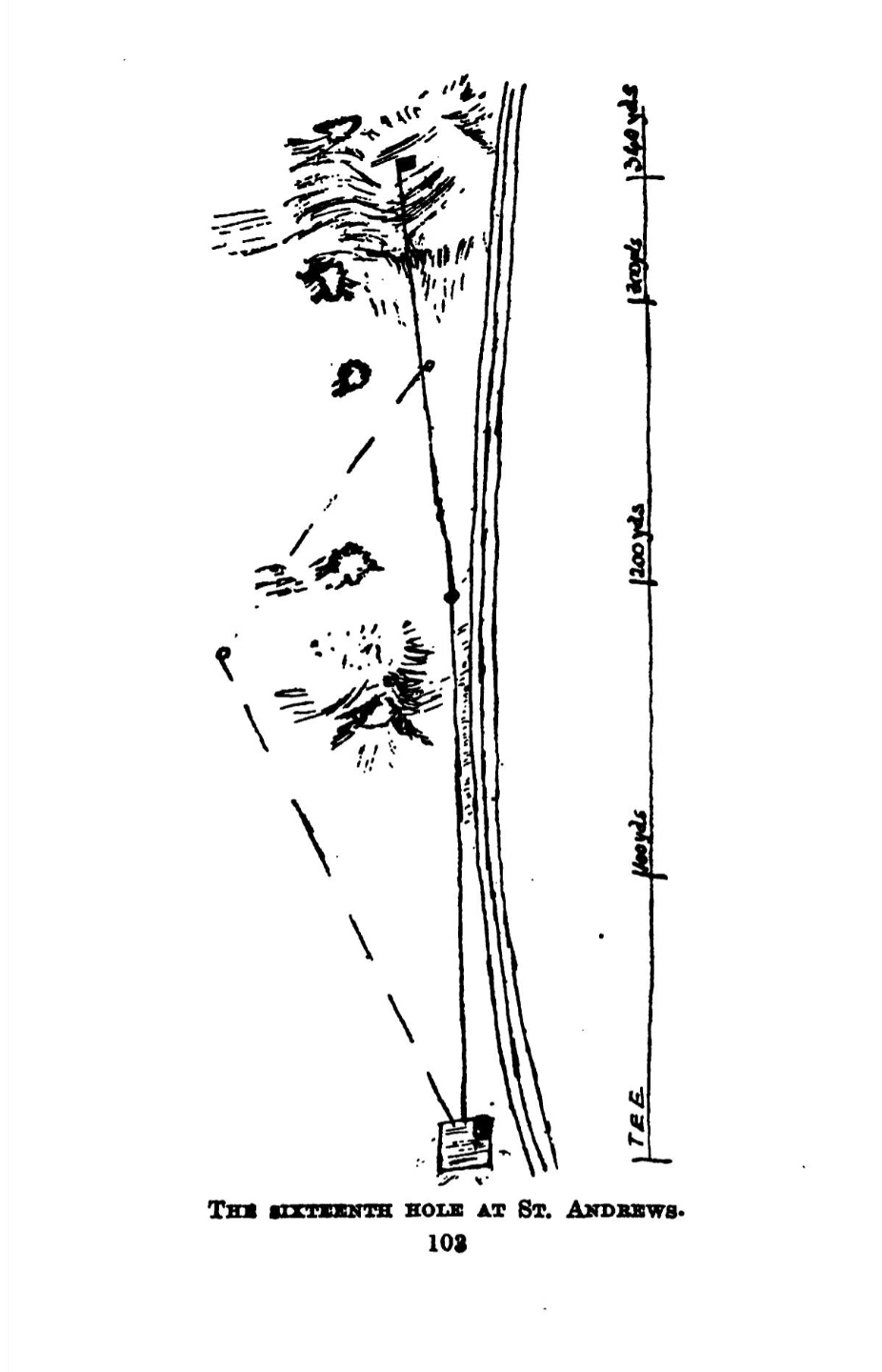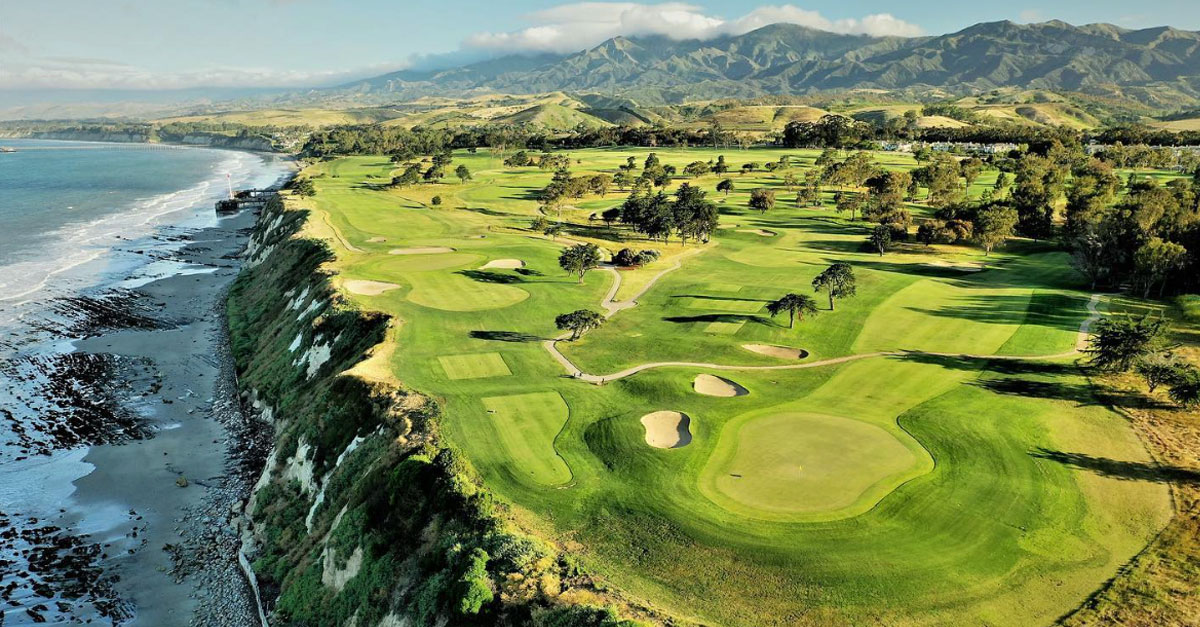Hi there, FEGC members. Here’s what has my attention in the world of golf architecture this week:
→ Tom Doak’s long-awaited renovation of Sandpiper Golf Course—an oceanfront public course in my hometown of Goleta, California—is inching closer to approval. On October 16, the city of Goleta released a draft environmental impact report (DEIR) deeming the potential effects of Doak’s work to be “less than significant” in most areas. The DEIR also evaluated Sandpiper’s other proposals, which include reconstructing the course’s clubhouse, building a coffee shop, and restoring the historic Barnsdall Rio Grande Gas Station. In general, the report found that the environmental impacts of these projects would be either insignificant or controllable through certain mitigation measures.
Boy, it’s hard to make sense of this stuff. The upshot, I believe, is that the environmental review process went well for Sandpiper. Nothing disqualifying was found—no previously undetected habitat for an endangered species, no site of historical significance to the local native tribes. And now it’s up to Goleta’s city council to decide whether the project should go forward.
The Sandpiper renovation has been stuck in permitting purgatory for almost two decades. The owner, Beanie Baby billionaire Ty Warner, commissioned Doak to create a master plan back in 2009. The prospect of a Doak renovation at Sandpiper is tantalizing. The course sits on a remarkable stretch of cliffs above the Pacific Ocean, but the design, created by William F. Bell (of Torrey Pines fame) in 1972, leaves a lot to be desired. With a makeover by Doak, Sandpiper would instantly become one of the best public courses in the U.S.
Some details of Doak’s plan can be found on this promotional webpage. His new routing maintains many of Bell’s playing corridors while making a few tweaks to take better advantage of the property’s natural assets. For instance, Doak keeps the clifftop holes more or less in their existing footprints, but he turns the par-5 13th into a par 4 and a par 3, and he reverses the uphill 14th to create a downhill, more visually striking 17th.
Doak’s biggest proposed changes are concentrated around the clubhouse. By relocating and shrinking the driving range (which currently occupies a large, handsome piece of land), he opens up space for a few brand-new holes. Sandpiper’s famously disappointing finisher—a mid-length par 3 playing over a pond—would be replaced with what looks like a short-game practice area.
Oh, and the proposed new clubhouse, designed by Santa Barbara-based Winick Architects, is… provocative.
When will all of this get underway? Your guess is as good as Doak’s. “There is still no timetable for it,” he wrote on Golf Club Atlas. “That’s California for you!”
→ After shutting down on September 2 and losing the PGA Tour’s 2026 Sentry event because of water restrictions, the Plantation Course at Kapalua Resort on the island of Maui will reopen on November 10. “Turf health and course conditions have improved to levels to allow for public play but are still not to PGA Tour standards,” stated a press release from the resort. The agronomy team is still working to recover the first and 18th greens, so only 16 holes will be available for play in the short term. Green fees will be set at a promotional rate of $399. Meanwhile, Kapalua’s Bay Course “will remain closed until further notice.”
I understand the resort’s urgency to bring golfers back to the Plantation Course, but I wish Kapalua had waited until all 18 holes were ready for play.
→ For Golf Digest, Derek Duncan details the modifications the R&A, with the help of Mackenzie & Ebert, will make to the Old Course at St. Andrews in preparation for the 2027 Open Championship. (See Jamie Kennedy’s visual summary.) The changes will largely be too subtle for viewers to notice, but I’m excited for the restoration of the fairway left of the Principal’s Nose bunker complex on the 16th hole. The left-hand option depicted in Alister MacKenzie’s 1920 illustration of the par 4 will once again be viable.
 Illustration of the 16th hole at the Old Course at St. Andrews
Illustration of the 16th hole at the Old Course at St. Andrews
→ Kyle Phillips will design a “heathland-style” course for private equity-backed Pandion Club in Estero, Florida.
→ Brian Curley will oversee renovations of the two Tom Fazio-designed courses at Pelican Hill Golf Club in Newport Beach, California.
→ Small win: Royal Manchester Golf Links in Mt. Wolf, Pennsylvania, will not be rezoned for the development of a data center. Stay vigilant, folks!
→ Social roundup:
The TGL has enhanced its “Greenzone” for the upcoming 2026 season.7 Mile Beach, a Tasmanian links designed by Mike Clayton and Mike DeVries, will debut on December 4.OCM’s new short course at the Stanwich Club in Connecticut has been grassed.
{{inline-course}}







